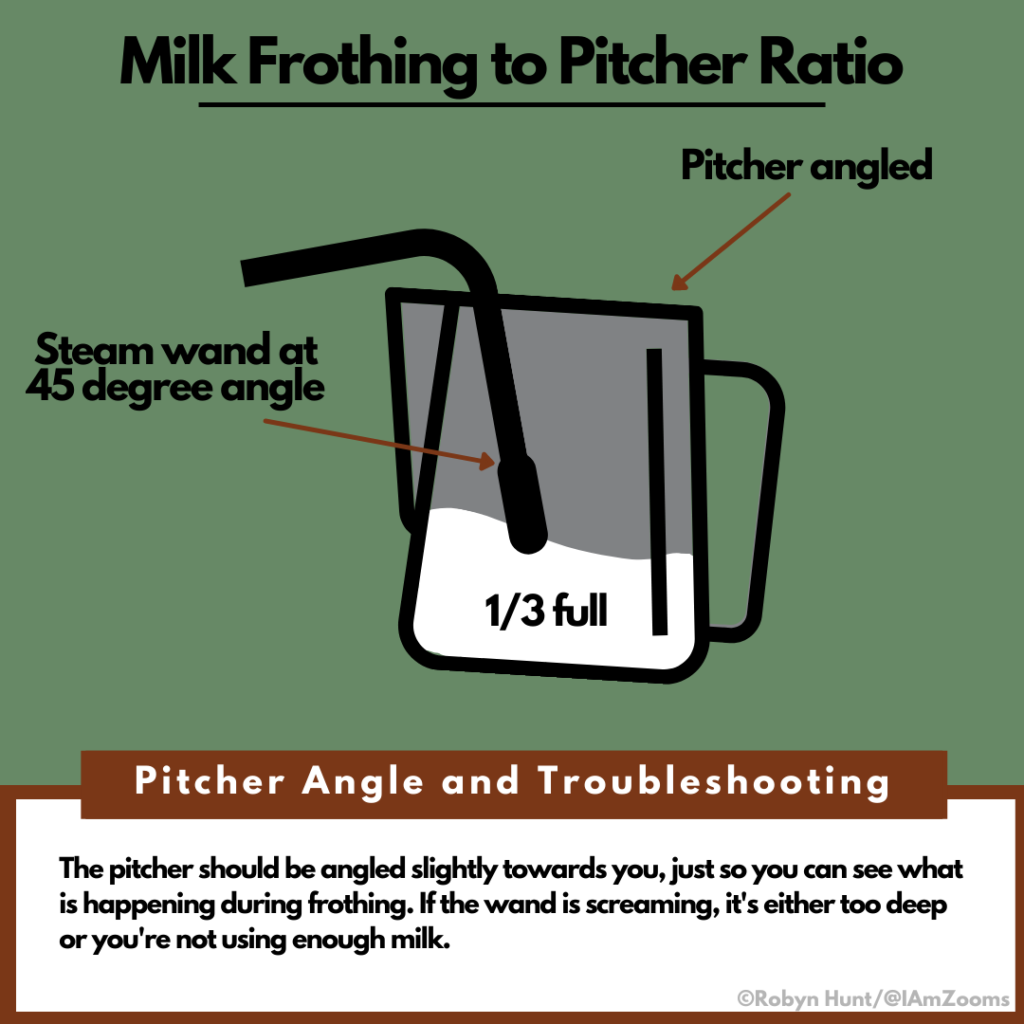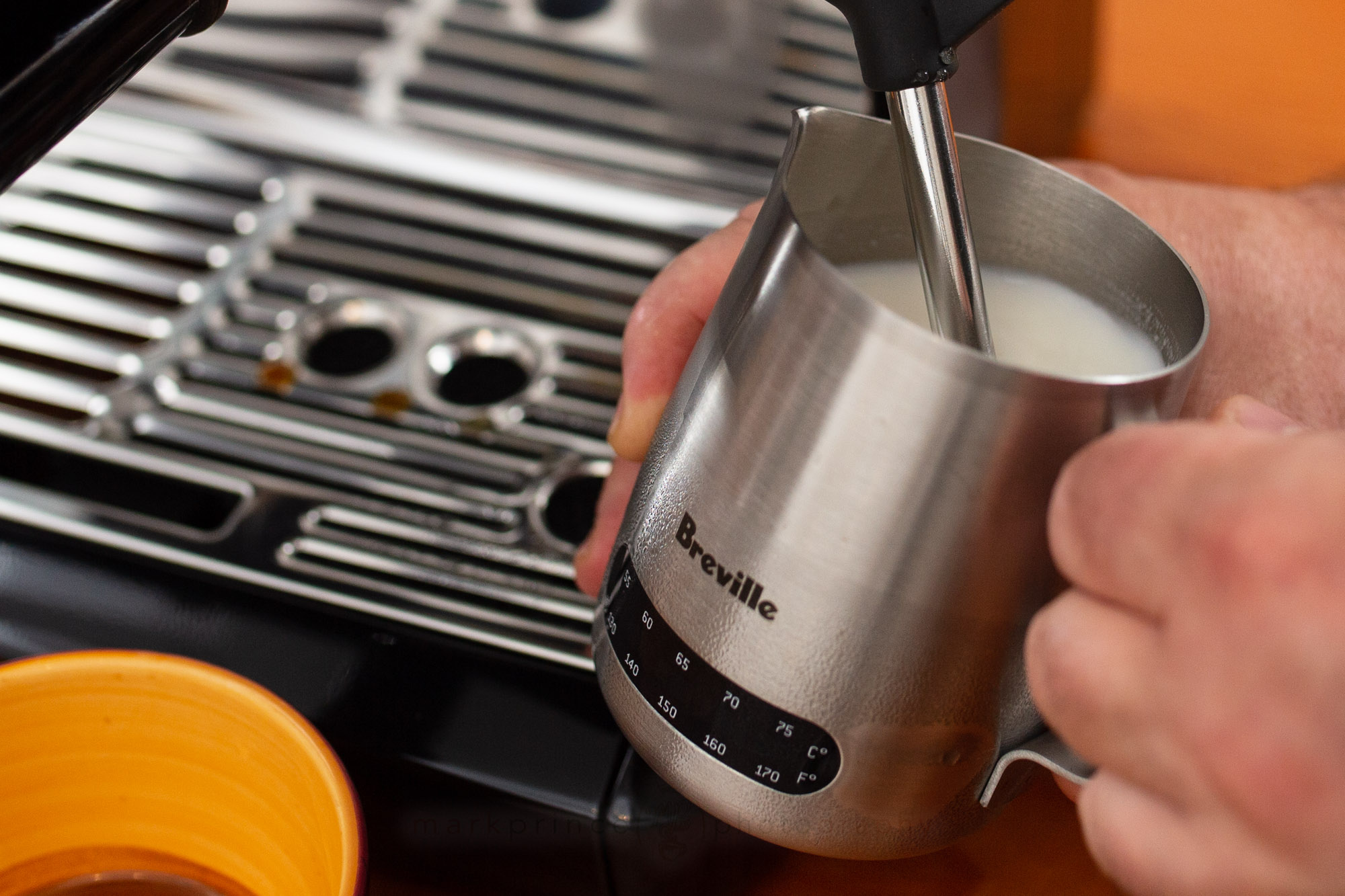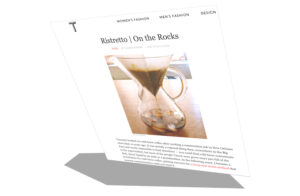Imagine sitting in your local coffee shop enjoying your favorite java juice of choice. There’s some acoustic Indy folk music playing in the background, and it’s the ideal atmosphere for working. Suddenly the sound of a screaming steam wand cuts through the air. You’ve just entered into the coffee shop version of a horror movie. And if it were a movie, it would be probably be called The Curse of the Screaming Steam Wand.
So why is it screaming? It’s simple – the wand isn’t drawing in enough air. The result? A shrill sound that makes your eye twitch and has the potential to scald and burn your milk. Even the most seasoned barista has endured this at least once in their career, so don’t worry. Experiencing the “cry of the banshee” is all part of the learning process. Just remember: you’re not screaming while you’re making your latte, so your milk shouldn’t be screaming either.
There are a few different reasons why your steamer wand is crying out bloody murder, so let’s address them:
- The steamer wand is in too deep;
- The wand isn’t fully open;
- You’re not using enough milk;
- You’re reusing already steamed milk;
The steamer wand is in too deep

Make sure that the steamer wand is at a 45° angle, about halfway in between the center and side of the pitcher. The wand tip should be fully submerged and be about 1.3 cm (1/2 in) from the bottom.
The wand isn’t fully open
First thing – every single espresso machine will have its own “personality”. It’s like meeting someone for the first time. And just like getting to know a person, you’ll eventually begin to get to know (and understand) the way your machine functions (or doesn’t). If you’re just starting out on your milk steaming journey, or if it’s steaming and bubbling up much faster than expected, then it’s ok to practice by not opening the valve up all the way. The milk foam might not be what you’re expecting, but the more comfortable you get with the power, the more steam you can release.
You’re not using enough milk
The milk foam will double in volume once it’s fully formed, so it’s a general rule to keep your pitcher at around 1/3 full. Any less and you’ll have difficulty producing foam, and you’ll also hear the wand screaming. When you’re learning how to steam and froth milk, it’s also ok to start off with more milk that you’re planning on using. Once you become more comfortable with the entire process, the less excess milk you’ll need.

You’re reusing already steamed milk
Always start with a chilled pitcher and fresh, cold milk. Reheating already hot milk will not only hurt your ears (that lovely scream) but it can burn your mouth, too. Reheating milk also cause the proteins to break down even further, meaning the flavor and consistency will be affected. Your milk will begin to lose its sweetness and will most likely begin to burn.
Lastly, don’t forget to clean the wand. To do this, take a wet towel and place it over the tip, open the valve to purge any milk, and then close it. Once it has cooled down, remove the tip by unscrewing it and giving it a good soak. The tip should be free from any obstructions.
When I was a baby barista, it was a common sound in every coffee shop I had been in, so I thought it was normal. Because of this belief, I made it a point to make my espresso scream every single time I made a drink. Every time. Why? Because I didn’t know any better. I was trained by my coworker who also, interestingly enough, had been taught that “the scream” was what you wanted. We both eventually learned that this wasn’t a good sound. And then we ended up getting married.
Just remember that nothing good comes from a screaming steam wand. Unless you count meeting your spouse. I guess that one worked out in my favor.































